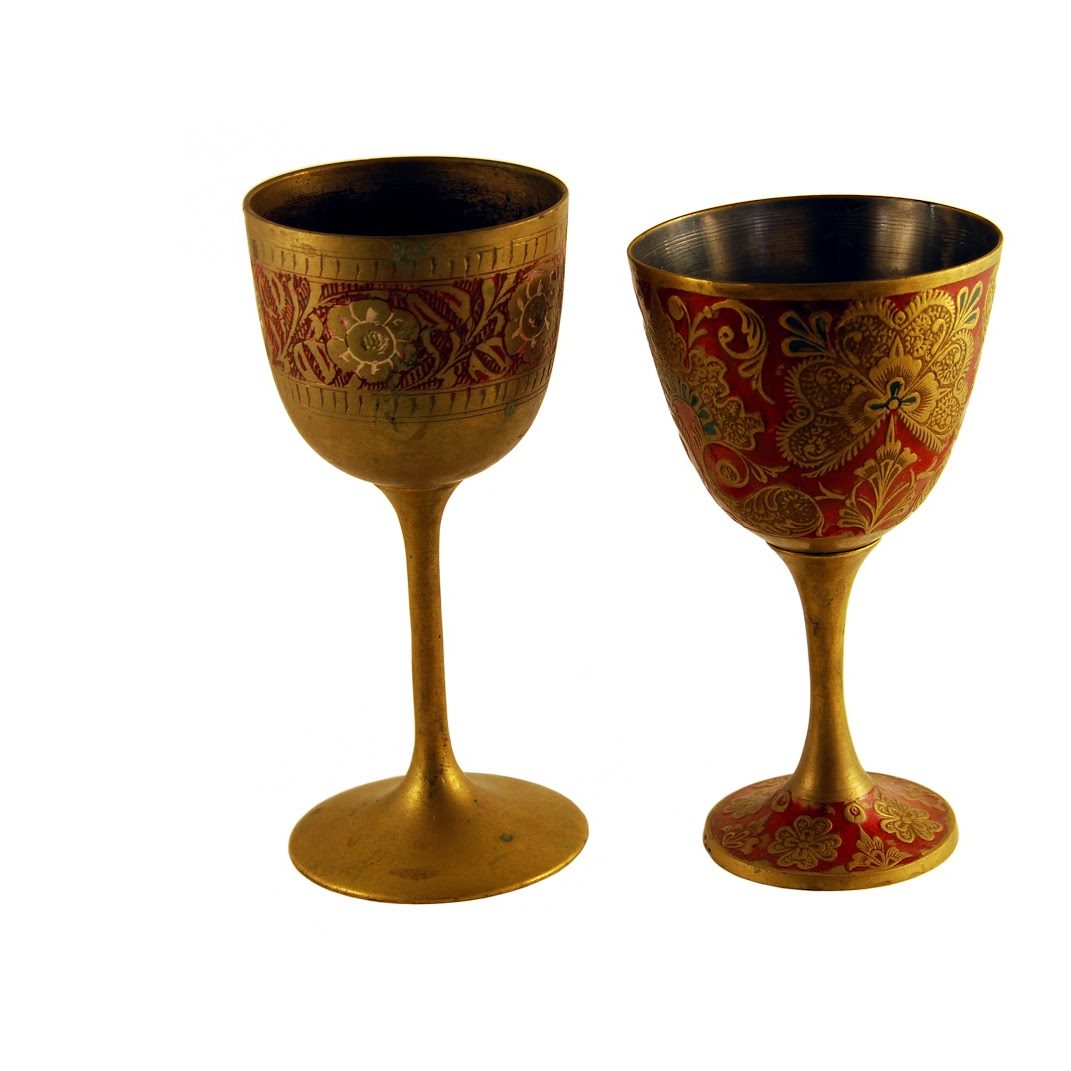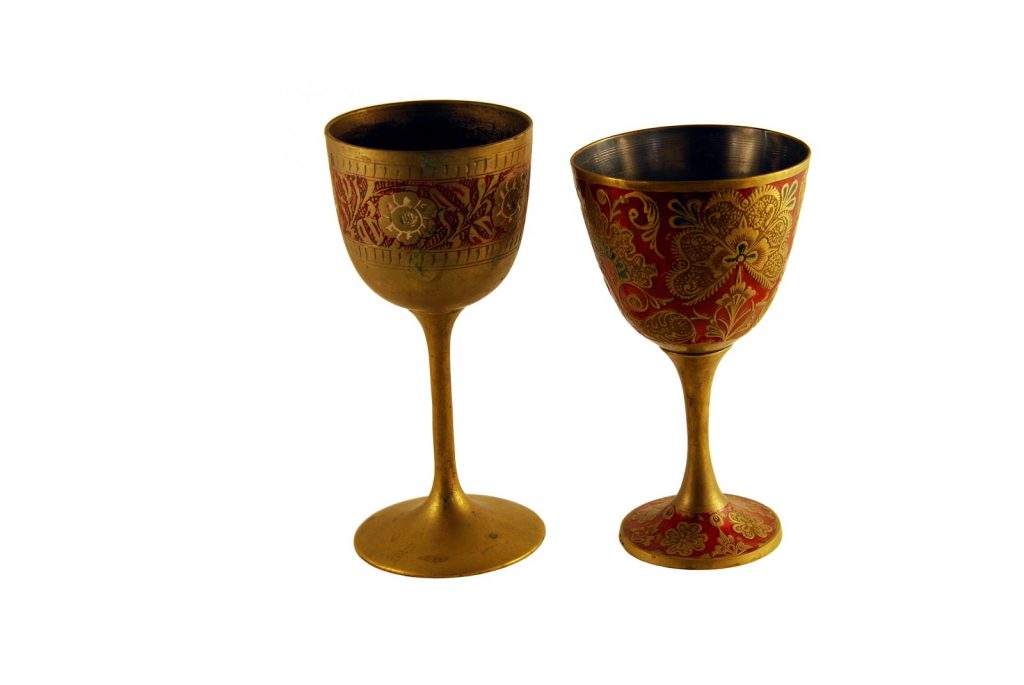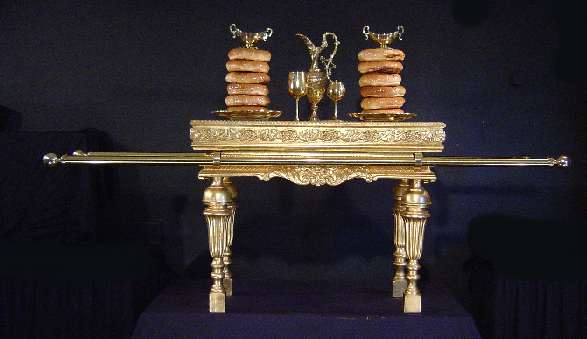Not long ago I under took a study of the word “vessel” in the scriptures. For sometime I had been impressed by the scripture (which is repeated four times in the standard works) which says,
“Depart ye, depart ye, go ye out from thence, touch no unclean thing; go ye out of the midst of her; be ye clean, that bear the vessels of the Lord.” (Isa. 52:11)
“And then shall a cry go forth: Depart ye, depart ye, go ye out from thence, touch not that which is unclean; go ye out of the midst of her; be ye clean that bear the vessels of the Lord.” (3 Ne. 20:41)“And go ye out from among the wicked. Save yourselves. Be ye clean that bear the vessels of the Lord. Even so. Amen.” (D&C 38:42)
“Go ye out from Babylon. Be ye clean that bear the vessels of the Lord.” (D&C 133:5)
I was intrigued by that word “vessel”. I looked it up in the 1828 Websters Dictionary as saw that it was defined as:
- A cask or utensil for holding liquors and other things;
- In anatomy any tube or canal in which blood or other humors are contained or
secreted-arteries, lymphs, spermatics, etc; - In physiology of plants, a canal or tube in which sap is contained;
- A ship.
Basically, a vessel is anything that contains something, most often a liquid.
As I studied the use of the word “vessel” in the scriptures I found that there are three main ways in which the word is used. The first was to refer to the vessels (bowls, cups, spoons, etc) that were used in the ancient tabernacle and in Solomon’s temple, the second was to refer to a sailing ship (Ether 2:12), and the third was to refer to the human body, specifically in the context of sexual purity.
The vessels of the tabernacle and temple were stored in the Holy Place on top of the table of shewbread (which can be translated as the “table of presence”). This table held loaves of bread which literally stood before God, seeing as they were placed before the veil that separated the holy place from the holy of hollies, where God dwelt. The bread sat on the table all week until the Sabbath when it was eaten by the priests and replaced with new bread. The table of shewbread also had four rings on its sides in which were inserted two staves (poles). The tabernacle was portable and the poles were used by the Levites to carry the table when the children of Israel were traveling in the wilderness. The ark of the covenant, the altar of sacrifice and the altar of incense were also carried by the priests in the same fashion (see Exodus 37).
In addition the table of shewbread also contained many vessels, which were described as God’s “dishes and his spoons, his bowls, and his covers to cover withal (Exod. 31:16).” That final phrase “covers to cover withal” can also be translated as “jugs used for pouring libations”, a libation
being a ritual pouring out of a liquid (usually oil or wine) as an offering. The vessels were made of pure gold and they were dedicated to the Lord, only to be used seen by the priest and used for His purposes. The table of shew bread in Solomon’s temple contained more than 5,400 vessels of gold and silver (Ezra 1:6-7) and the weight (and thus worth) of them was unweighable because it was so great (1 Kgs. 7:45-51).
As I studied the history of the table of shewbread I was struck by the apparent similarities it has to our modern day sacrament. Today, once a week on the Sabbath, we also offer up bread in remembrance of Christ’s body and pour out water, in numerous vessels, in remembrance of His blood. Like in ancient times these emblems are still carried, or born, by those who hold the Aaronic priesthood. Though unlike in the temple of old, today all who are worthy– not just the priests– may eat of the offering and make sacred covenants to take the name of God upon them.
This is why the scripture ” Be ye clean that bear the vessels of the Lord” is often used to remind the men who use the priesthood to bless and administer the sacrament that they must be morally clean and worthy to handle those sacred emblems. They are, like the ancient priests of old, administering from the vessels of the Lord.
Yet the phrase “be ye clean who bear the vessels of the Lord” goes even deeper than that. There are numerous examples throughout the scriptures in which the human body is referred to a vessel, specifically in reference to remaining sexually pure. For example, in 1 Thess. 4:4 Paul admonishes the saints to be sexually pure and abstain from every fornication. Then he instructs, “Everyone of you should know how to possess his vessel in sanctification and honor.” Afterward he continues by telling them that they should not have “lust of concupiscence”, concupiscence coming from the root of “concubine” and meaning to have a strong sexual appetite.
Another one of the most interesting uses of the word “vessel” is in 1 Sam. 21:5 when David and his men, starving after a long flight from Saul, approach the priest Ahimelech and ask him for food. Ahimelch has no bread to give them except for the shewbread, which is only to be
eaten by priests. Even so, Ahimelech tells them that he will allow them to eat it if, “the young men have kept themselves at least from women.”
David responds by telling him that all the men have been at least three days without being sexually intimate with women. He says, “The vessels of the young men are holy”, after which the priest allows David and his men to eat the holy bread.
These examples are so interesting to me, because not only do they refer to the body a vessel, but they are specifically referring to the sexual organs as being holy vessels. Think back to the definition of the word vessel, it is a cask, a tube, a canal for carrying something, specifically a liquid.
There are many parts of our bodies that can be considered vessels (veins, heart, lymph, etc) but there are only a few organs in both men and women that possess God-like abilities. The life giving organs in both men and women meet the definition of a “vessel”. In men their vessel stores and then pours out life giving liquid while the female vessel receives, and then contains, the liquid. Furthermore, a woman’s body takes this liquid and creates from it a new human life, a body that will grow and develop within her. The womb becomes the ultimate vessel, carrying the potential of continuing life.
Despite our scientific advances much of what happens within the womb, within that vessel, is still mysterious to us. This is because the womb is a sacred vessel, and even if it never bears a child, it is still a place a place where God’s power dwells and the potential for new life resides. Any woman who has ever shed her blood each month has that power within her; she is a testament to the continuation of life. Alma bears testimony of this when he calls Mary, the mother of Christ, ” a precious and chosen vessel” before she has even born the Christ child (Alma 7:10). The womb of every woman is a precious and chosen vessel, even if it never has the opportunity to be filled.
I recently read a summary of a talk Elder Dallin H. Oaks gave at a recent regional conference. Here is what the author related:
“He [Elder Oaks] first compared the vessels of the Lord to the emblems of the sacrament. He reminded the young men in the Aaronic Priesthood that they have a special responsibility to stay clean, physically and morally, in order to handle those sacred vessels. What I heard next surprised me just a bit… What he said was that just as young men have the potential to bear the emblems of the sacrament (and later officiate in other priesthood ordinances), and therefore the vessels of the Lord, so young women have the potential to bear children – vessels which will bear the spirit children of God. And for that reason, young men and young women are both bound by the counsel in Section 38, namely to be clean in order to bear the vessels of the Lord.
It is fascinating to me to think about the womb and the male and female sexual organs as being vessels of the Lord. This is especially meaningful for those who have made covenants in the temple because it means that our bodies are really not our own. They are promised to God and when we use our power in God’s work we become His holy vessels, places in which God pours out His power and works miracles. We literally carry God’s work forward on the earth as we bear forth in our bodies His power, His priesthood, His children, His authority, His truth, His testimony.
Each and every one of us bears the vessels of the Lord.
Be ye clean.










Love this, those are some really interesting thoughts and points, thank you for sharing your research.
I thought it was confusing that David and his companions were only allowed to eat the shewbread if they had been celibate for 3 days. This implies to me that the priest was telling them sex makes you impure. And yet it is sex that creates life in a godlike manner, as you so eloquently stated at the end of your post. What are your thoughts on this apparent mixed message (assuming David and his friends were married men and the sex the priest was referring to would have been with their wives). I'd love to hear your thoughts!
@Heather, Leviticus 15 explains the law with regards to bodily emissions of various sorts. Verses 16-18 refer to sexual relations. However, it's the emissions that render one unclean, not the act. One logical reason might be that emissions = literally unsanitary in many cases. As for the spirit of the law, though, I imagine that for those that observe the law of Moses, fluids, and in particular blood, often represent life, so an emission represents a loss of said life-giving substance.
Anyway, because of said laws, Jewish soldiers off to war on a holy cause were expected to be ritually clean before leaving on such a task. David and his colleagues affirm that not only had they followed the tradition as Ahimelch required, but adds two more rebuttals: that also their vessels (their bodies, their weapons, and their clothing) had not been defiled, and that the bread is no longer in its hallowed state anyway.
I love this verse in 2 Corinthians 4:7
7 But we have this treasure in earthen vessels, that the excellence of the power may be of God and not of us.
I also find it interesting that a woman's breasts are vessels, that give life to her baby. And the womb is 'closed' while a woman breast-feeds exclusively.
Which reminds me of another point about a land "flowing with milk and honey". As mentioned in General Conference, Honey has all the nutrients necessary to life. And so does milk. I thought that was neat.
I enjoy your blog, but I figured I'd offer an alternative view. While I agree with the idea of your message, and our sexual organs can be considered a great symbolic/literal vessel of the Lord, I'd counter that in none of the examples state the Lord's vessel as such.
-Frequently in the Old Testament is the literal mention of the sacred emblems of the priesthood (which of course doesn't preclude symbolism).
-Paul (1 Thess. 4) extends the idea of vessels as being our bodies, and refers to sexual sin as only one of many of the aspects of self-mastery we need to learn (albeit one of the grossest evils of our day). Ultimately our body is the vessel that has the potential to become like God, not just the sexual organs; it possesses the important power of mortal life, but as a whole it is the holder of the Spirit. It is as vessels of the Spirit that we are justified and sanctified. Women may have the added blessing to bear the vessels of the Lord in this sense through childbirth.
-As for David's story, the reference is much more likely to deal with the cleanliness of their clothing (common translation of vessel) and physical body, according to ritual (cf. Lev. 15:17, for example), not their moral cleanliness or sexual organs in specific (see, e.g., Smith, or Keil and Delitzsch).
Just some thoughts.
Thank you so much for your ideas, i love the conversation! I think you bring up a really good point that in most cases it is our entire body that is refered to as a vessel. Which in itself is such a beautiful idea, that we are literally containers of the holy spirit and that we can allow him to fill us in a very real way. I guess the idea that i was just trying to bring up is that even with our greater vessel of a body we have smaller vessels that are literally filled with sacred power. It is interesting to me that, just like the sacred spaces of the tabernacle and solomns temple, our bodies also have places in which only those who have been given divine permission can enter lawfully. It is like our whole bodies, our vessels, represent the tabernacle while our smaller vessels, the womb especially, represents the holy of holies. The sacred space inside where only one with permission and authority from god is free to enter. I cant help but feel there is so much more meaning in these scriptures about vessels than perhaps we can even quite comprehend. I dont think we realize enough how literal it s that our bodies are temples!
I definitely enjoy the analogy and idea. I like the idea of the "holy of holies" in our temple, too! Thanks and keep up the good work!
You've wowed me yet again. Love this.
Heather, have you read this? http://beautopotamus.blogspot.com/p/gospel-symbols-in-childbirth-lds.html
You mentioned "a libation being a ritual pouring out of a liquid (usually oil or wine) as an offering." I like the idea that each month my body makes an offering of blood, showing my willingness to give my whole vessel to the Lord for his work. It can be an outward symbol of an inward covenant, or it can simply be an inconvenient event that I want to be over as quickly as possible. I prefer to think of it as the former 🙂
Thanks for all your thoughts and writings. I have been inspired and have just begun my own study of the works of scripture looking for and pondering about the women I find there, and how I can learn from their stories and lives.